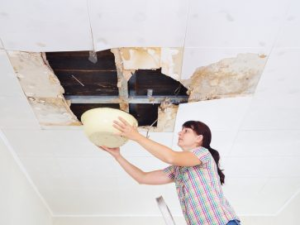Workshop Aziendale is a great way to cultivate a culture of learning and to bring your team closer together. It also shows employees that their company cares about them and their growth.

A good workshop will use real-world examples to illustrate the concepts being taught. This makes them more relatable and memorable.
Corporate workshops can help cultivate a culture of learning by focusing on topics that are relevant to employees’ professional development and career advancement. They can also provide a platform for collaborating across departments and teams. By fostering a learning culture, businesses can improve employee retention and satisfaction, which ultimately impacts their employer brand.
Workshops allow employees to learn in an immersive environment that allows them to practice skills and receive immediate feedback. They can also be more effective than online training because they are designed to engage participants and reinforce new knowledge over time. The best corporate workshops are led by subject matter experts and a facilitator who can create engaging materials, deliver impactful presentations, and facilitate meaningful discussions.
Many team building workshops focus on collaboration, communication, and trust between employees. They include group activities such as problem-solving and brainstorming exercises to increase collaboration and alignment. These workshops can improve team morale and boost productivity. Moreover, they can inspire employees to pursue innovation.
Cultivating a culture of learning requires all stakeholders to be on board, including senior leaders. The most effective leaders will actively promote and participate in learning initiatives, demonstrating that they’re willing to take risks and have an open mind. They will set an example for others and encourage them to take part in these types of workshops.
Whether you’re looking to improve your leadership skills or build a strong team, a corporate workshop is the perfect place to develop these skills. In addition to being fun and engaging, they’ll also teach you how to solve problems more effectively and improve your work life balance.
Workshops can be as creative as you want them to be, from a scavenger hunt to pottery lessons. They can also be a great way to show your employees that you care about their wellbeing.
Organizing a workshop can be a challenge, especially when trying to keep everyone engaged. Ensure you have plenty of restrooms available at your event by hiring VIP To Go for all your restroom needs. We provide portable restroom trailers and hand washing stations to accommodate your attendees’ needs, and they can be customized with your company logo or theme.
It’s a great way to spotlight potential leaders
A great way to identify and nurture potential leaders in your organization is by offering workshop sessions that focus on specific skills. Leadership development workshops allow employees to learn and practice key leadership skills such as mental fitness, communication, and leadership presence. These workshops also provide a safe space for employees to develop their leadership and professional potential. This helps to create a culture of thought leadership where your team members can lead others toward success and growth.
Developing a culture of learning is one of the keys to long-term business sustainability. Workshops offer an ideal setting for employee learning, and they can be a powerful tool for helping your company keep up with changing business landscapes. Workshops can be designed to address a range of issues, from creating a new product or service to tackling internal challenges. They can even be tailored to your company’s goals, ensuring that they are relevant and beneficial for your team.
Another great thing about workshops is that they can help to break down departmental silos. This can be particularly beneficial for teams working on large projects that require the input of multiple departments. By bringing employees from different departments together for workshops, they can collaborate in real time and ensure that all goals are aligned with the larger corporate goal. This can increase the likelihood of a project’s success and improve communication between departments.
Workshops can be a great way to stimulate creativity and innovation in the workplace. They encourage employees to think outside the box and can help them come up with unique solutions to problems. In addition, they can help to promote a culture of collaboration and innovation, which are both crucial for a company’s survival in the fast-paced business world. In addition, workshop activities can also help to strengthen employee morale and reduce turnover rates. Employees with high morale are more engaged and productive, which can lead to better overall productivity. So, if you’re looking for ways to boost morale and engage your team, consider hosting a creative business workshop.
It’s a great way to bring teams closer
Incorporating learning and development into a workshop can help bring teams together. It can also enhance the participants’ morale and create a positive work environment. In turn, this can boost the company’s employer brand. It can also lower employee burnout and turnover rates.
Corporate workshops can spark creativity and encourage innovation in the workplace. They can also be fun and interactive, which helps to break down barriers. The best way to make workshops fun and interactive is to have an expert facilitator who knows how to keep the attendees engaged.
The ideal workshop facilitator should have a deep understanding of the subject matter and a strong background in training design and delivery. They should be able to customize the content, discussions, exercises, and role-plays to suit your organisation’s goals and culture. Generic, off-the-shelf workshops often fall flat.
During an innovation workshop, you can have employees identify problems in their departments and brainstorm solutions. They can then present their ideas to the rest of the group and discuss them in a healthy and supportive way. This can lead to new and innovative ways of solving problems, which is a great way to increase productivity and efficiency.
A team building workshop can promote effective communication between employees and strengthen relationships. These sessions can also highlight the company’s values and how they should impact employee behavior. A team building workshop can be as simple as a lunch and learn or an offsite.
A workshop can be a great way to spotlight potential leaders. This is because it can offer opportunities for employees to take charge in small group activities or larger projects. This can give them experience in leadership roles, which will benefit them in the future. It can also help them develop their skills and show that they have what it takes to be a leader. It can also improve their morale and motivate them to perform better. They will feel that their company cares about them and their careers. This will encourage them to work hard and contribute to the success of the organization.
It’s a great way to show employees they matter
Corporate workshops are structured events that focus on a specific topic. They’re led by trained instructors to improve employee skills, knowledge, and performance in the workplace. They can also foster a culture of learning and wellbeing in an organization. They’re an essential tool for companies that want to grow and succeed.
These activities often include team building exercises, which cultivate team spirit and sharpen communication skills. This helps employees work together to overcome challenges and achieve goals. As a result, they feel empowered and their sense of accomplishment doesn’t just stay in the workshop walls; it spills over into daily tasks and elevates morale.
Having an experienced facilitator who knows how to keep attendees engaged is crucial for the success of a workshop event. They should have a deep understanding of the content and how to deliver it in a compelling way. They should also have extensive experience designing and leading corporate workshops. This will ensure that the workshops are geared towards the needs of the participants and help them learn new skills in a fun, exciting environment.
Another advantage of corporate workshops is that they can be used to tackle specific organizational challenges. For instance, a leadership development workshop can be used to equip managers with the tools they need to guide their teams effectively. Similarly, a customer service excellence workshop can teach employees how to better serve customers and enhance the company’s reputation in the market.
While many people view workshops as boring, a good workshop can be an engaging learning experience for employees. To maximize the impact of a workshop, consider incorporating quick games during breaks to keep participants energised. These games can be as simple as puzzles or riddles that pique attendees’ competitive natures and encourage them to return to the session with renewed focus.
Whether it’s a skills training workshop or a diversity and inclusion workshop, a great facilitator is essential to the success of the event. They should be able to motivate and engage the participants and provide them with an interactive learning experience that will leave them with a lasting impression.



